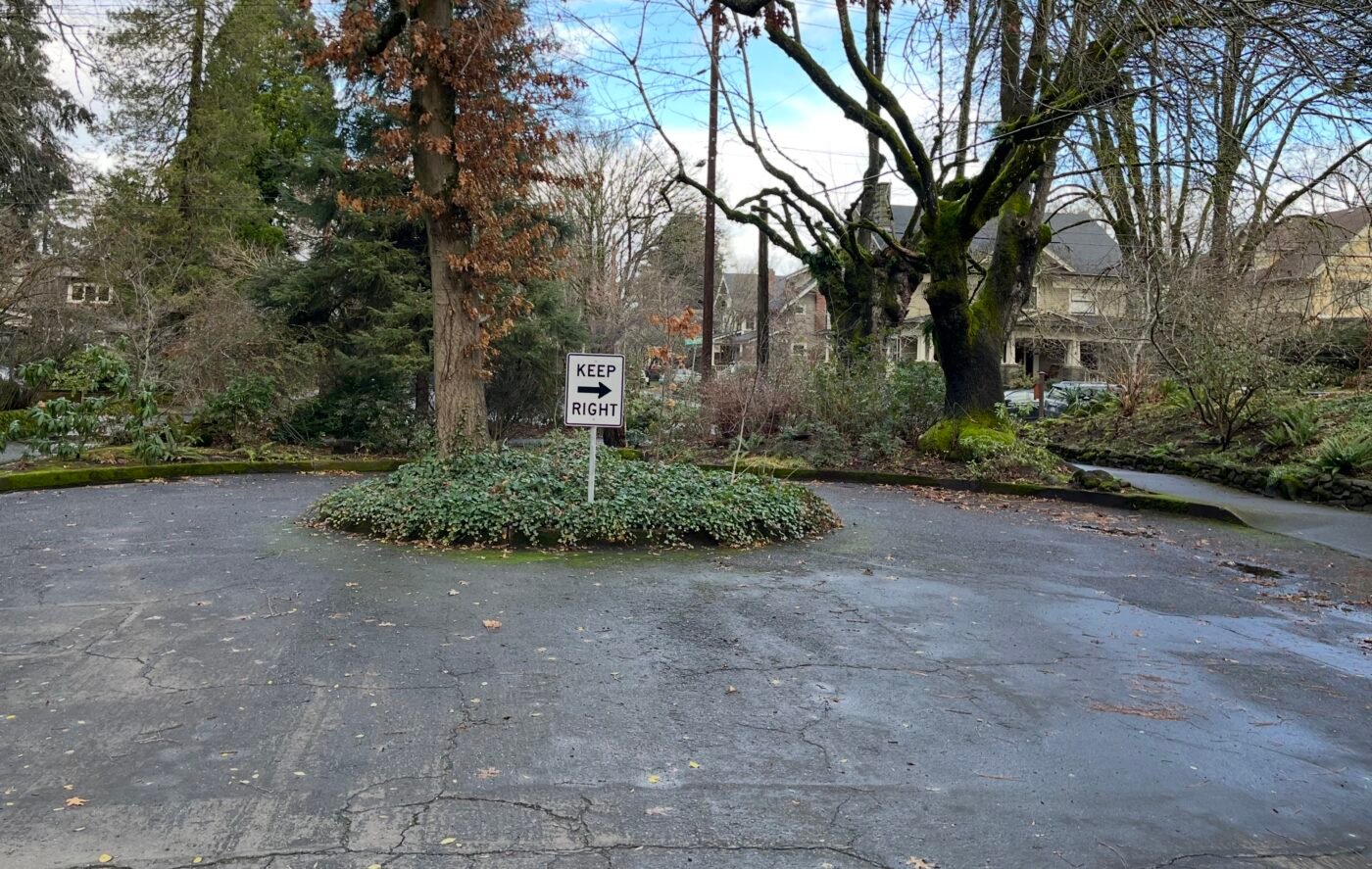By Sam Balto, northeast Portland resident and co-founder of Bike Bus World.
A latest Bud Mild Tremendous Bowl industrial incorporates a neighborhood cul-de-sac reworked right into a joyful group hub — children enjoying, neighbors socializing, and life occurring at a human scale. It’s a placing picture, not only for beer drinkers, however for anybody who cares about livable streets. And but, in cities like Portland, we’ve spent a long time resisting the very idea of cul-de-sacs in favor of a standard road grid that prioritizes automotive motion.
It’s time to rethink that method.
City planners and transportation advocates have lengthy dismissed cul-de-sacs as a suburban mistake — inefficient, disconnected, and automobile-dependent. However they miss the purpose: Suburban neighborhoods don’t design cul-de-sacs with vehicles in thoughts; they design them with high quality of life in thoughts. By blocking by visitors, cul-de-sacs create safer, quieter streets the place individuals — particularly youngsters — can comfortably stroll, bike, and play. In Portland, the place we declare to prioritize energetic transportation, why will we let vehicles dominate our residential streets whereas the suburbs have already solved this downside?
Let’s embrace cul-de-sacs — not by copying suburban sprawl, however by adapting the idea to make city neighborhoods safer, more healthy, and extra linked.
– Sam Balto


The Drawback: By Visitors Ruins Neighborhoods
Portland’s road grid is nice for navigating the town by automotive, however that’s precisely the issue. Too many residential streets are handled as cut-through routes, with drivers utilizing neighborhood roads to shave a couple of minutes off their commute. The outcome? Rushing, noise, and unsafe circumstances that discourage strolling and biking.
Take a typical Portland aspect road: regardless of being designated as a “neighborhood greenway,” it nonetheless permits automotive visitors to cross by freely. This implies households strolling to highschool and youngsters driving their bikes are continuously in danger from impatient drivers who see the road as a shortcut moderately than a shared public house.
The Answer: Embracing the Finest A part of Cul-de-sacs
Slightly than rejecting cul-de-sacs outright, Portland ought to borrow their finest components. We should always design extra residential streets the place vehicles can’t minimize by, however individuals strolling and biking can. That is already a confirmed idea: Barcelona’s superblocks prohibit automobile entry whereas conserving streets open for pedestrians and cyclists. Dutch woonerfs (dwelling streets) make vehicles second-class residents in residential areas, moderately than the default precedence.
Portland has dabbled on this with diverters on greenways, however they’re too few and much between. We have to go additional. Think about a metropolis the place complete residential zones are blocked off to by automotive visitors, the place each road features like a cul-de-sac for drivers however stays absolutely permeable for individuals strolling and biking. This could make our streets quieter, safer, and extra inviting—not only for children, however for everybody.
A Name to Motion for Portland
If we really imagine in walkable, bikeable neighborhoods, we have to cease prioritizing automotive comfort over group livability. Which means rethinking our method to residential road design. Let’s embrace cul-de-sacs — not by copying suburban sprawl, however by adapting the idea to make city neighborhoods safer, more healthy, and extra linked.
Portland doesn’t want to withstand cul-de-sacs. We have to reclaim them — on our phrases.































